Travel Guide to the Garden Route and Little Karoo
The Garden Route
The world-famous Garden Route starts approx 350 kms east of Cape Town around Mossel Bay and stretches for approximately 300 kms east to Jeffreys’ Bay. It coincides with the transition zone between the winter- rainfall Mediterranean climate of “The Cape” and the summer-rainfall climate that dominates the rest of the country. It is a unique and rare climatic zone in non-equatorial Africa as it rains all year round – a blessing in Africa! The region lies on a well forested narrow coastal plain, sandwiched between magnificent white sand beaches and dunes on one side and the impressive Outeniqua and Tsitsikamma Mountains on the other (these mountains form the almost impenetrable barrier to the dry, semi-desert Little and Great Karoo regions of the interior). The climatic difference between the two climatic zones is abrupt, rapid and drastic, all happening within a few kilometers.
The Garden Route has a mild and (surprisingly) very sunny climate, despite its generous precipitation. Temperatures rarely fall below 10 C in winter or exceed 30 C in summer. The region is known for its abundant, diverse indigenous plants and flowers, many rare or endemic to very small areas, others world famous and widespread; ericas, proteas, watsonias, agapanthus, gladioli, arums and strelitzias – all at home here in their very special part of the world (thus the name Garden Route!). Amongst the vast commercial forests lie preserved remnants, totaling about 35.000 hectares, of the original indigenous temperate rainforests with their magnificent huge trees, many of which grow nowhere else on earth – including Yellowood, Stinkwood and Ironwood . http://www.aboutcapetown.com/gardenroute.htm
The Garden Route is visited for its incredible natural beauty, beaches, lagoons, lakes and forests. Other than a reasonable choice of restaurants and bars don’t expect its towns to offer much in the way of nightlife – Knysna and Plettenberg Bay being potential exceptions. This is the place for those who love the great outdoors, a variety of incredible hikes, walks and the stupendous beaches. The Garden Route comes into its own more as a real adventure playground; scuba diving, surfing, snorkeling, kayaking, canoeing, rafting, biking, hiking, ‘sandsurfing’, flying, hang-gliding, paragliding, ballooning and parachuting. It is also a quiet, peaceful, relaxing getaway in a beautiful natural environment.
With the exception of Mossel Bay and George, the two largest cities that lie towards the western extremity of the region, towns and villages are generally small, interlinked by modest, separate coastal villages and resort centers. Despite its overall rather bucolic appearance, development has been rapid in recent years and opposition to evermore tourist facilities, commercial (shopping) centers and especially golf courses has become strong and widespread . The preservation and protection of this very special, unique part of the world finally appears to be becoming the order of the day!
The Garden Route is a prime holiday destination for South Africans. In the summer and school holidays it is inundated by mobs of ‘trekkies’ from the interior and elsewhere. Prices can soar, at times almost doubling! Try to avoid the December/January or other peak holiday period madness by visiting the area in February/May, or October-November when the weather is superb and the mobs thinner on the ground. The region is also very popular with foreign ex-pats – known locally as ‘swallows’ (primarily Brits and Germans ) – who escape to the area during the tough European winter months.
NOTE: The journey from Cape Town to the Garden Route (N-2) is itself an easy, beautiful and interesting drive, whether by car or bus. After leaving the Cape agglomeration, the route enters the ‘wheatlands’ which continue over rolling hills and wonderful vistas to historic Swellendam, the country’s 3rd oldest town, nestled up against the 1.600 meter Langeberg (Long Mts). It is well worth the stop. The entire route parallels the coastal mountain ranges making for continual superb scenery. It is rural and agricultural South Africa at its best ! If you are ‘doing’ the Garden Route as a ‘side-trip’ to the Cape, its highly recommended to return via the interior route (the famous R-62) which runs down the inland side of the coastal mountains through the Little Karoo (see below). Of course the trip can be done in the opposite direction too!
A little taste of Swellendam: http://www.youtube.com/watch?v=7GejQ7Lqa0E
Mossel Bay is a large industrial centre, as well as being a major tourist destination with many safe family beaches in the area. It was here, in 1488, that Portuguese navigators first landed, and realized that they had rounded Africa on their exploratory discovery of the route to India. However for foreign visitors the town offers little attraction save for the Bartholomeu Dias Museum complex, which celebrates this first European landing on South African soil. The fascinating displays include an exact replica of the original caravel, built and sailed from Lisbon to Mossel Bay in 1988, the 500th Anniversary of Dias’ voyage. The famous Post Office Tree, reputedly the first “ Post Office” on the Continent is still there, growing alongside the museum. http://www.diasmuseum.co.za/ http://wikitravel.org/en/Mossel_Bay
George, built inland from coast, is the regional centre for the Garden Route and has the only major commercial airport for the entire region. The town is home to the impressive Outeniqua Transport (railway) museum as well as a lovely indigenous botanical garden. Although of somewhat limited interest itself, George makes a perfect base from which to visit the Garden Route, as well as Oudtshoorn, the ostrich farms, Cango Caves and Little Karoo just over the Outenique Mountains (via a marvelous mountain pass). The city is one of the ‘golfing centers’ of the country, renowned for its varied and beautiful courses, including Fancourt (home base for Ernie Els), George Golf Club and Obaai, amongst others. The town is but a few kilometers from several easily reached beaches – some vast and large like Glentana, Outeniqua Strand or Wilderness, others small and intimate like Herolds’ Bay or Victoria Bay . http://www.travellersworldwide.com/08a-south-africa/08-sa-about-george.htm. Also worth seeing is “The Map of Africa” and the fantastic views over Wilderness beach.
Below: Views over Wilderness Beach
All along the Garden Route, most of the beaches, national parks and walks/hikes along the coast are off the main road. They are easily missed, so take the time and look for the side roads – marked or not! They invariably lead to paradisiacal locales that are so raw and natural you will have the feeling of being the only – or first – person to ever visit them! Out of season (10 months or so of the year) they are generally deserted and quiet. Even in season, many rarely have more than a score of sunbathers , swimmers or walkers in sight.
Moving eastwards, is Wilderness and its vast beach, alongside a series of lakes (the ‘Lake District’) most of which is a large bird reserve, offering tremendous bird watching sites as well as walks through the marshes and into the nearby hills and mountains. Look for the Giant Kingfisher Trail up to the waterfalls. http://www.sa-venues.com/attractionsgr/wilderness.php
Sedgefield lies at the mouth of the huge Swaartvlei lagoon, and is renowned for its fantastic, largely empty beach as well as the coastal Goukamma National Park stretching eastwards towards Buffalo (Buffels) Bay. http://www.sa-venues.com/attractionsgr/sedgefield.php
Knysna is considered to be the ‘centre’ of the Garden Route, an attractive town situated on a huge lagoon protected from the sea by the Knysna Heads. As the original forestry and wood working ‘capital’ of the region it is famous for its beautiful wood products and furniture made from the highly valuable and rare indigenous woods. The town offers a wonderful selection of shops, art galleries, restaurants and perhaps the only lively nightlife scene on the Garden Route (that being relative). Although not ‘beach centers’ as such, Buffalo Bay and Brenton-on-Sea are two nearby resorts linked by a 8 km long beach. Across the lagoon from the town is the Featherbed Natural Reserve – an intact hunk of original coastal bush well worth a visit. http://www.gardenroute.co.za/knysna/
Below: Views from the Knysna Heads
Forests, and various tourist attractions (visit the Garden of Eden for a look and walk through intact indigenous forest) dominate the route to Plettenberg Bay, a chic, upscale resort town overlooking the imposing Robberg Nature Reserve, its vast bay, rivers and lagoons of the Keurbooms River. The town offers a wealth of activities and is a perfect place to pass a few days (providing the wallet can stand the strain!). The area has some of the loveliest beaches in the country; Beacon Isle, Lookout and Keurbooms , all of which will convince you that South African beaches are amongst the most beautiful and best in the world. This is the last real town on the Garden Route. http://www.plettenbergbay.co.za/ http://showme.co.za/plett/
Eastwards through beautiful countryside lies The Crags, known for Birds of Eden (the largest free-flight aviary in the world), Elephant Sanctuary (an orphanage for baby and larger elephants that helps reintroduce them back into the wild) and Monkeyland Primate Sanctuary. Despite the rather Disneyesque names all are well worth a visit for their interest, up-close contact and the wonderful work they accomplish. http://www.birdsofeden.co.za/ http://www.cruisethecrags.co.za/cruise/nature/elephants.html http://www.monkeyland.co.za/
The road crosses several river gorges just inland from the coast. Be sure to stop off at Bloukrans River, the deepest (216 meters) of the ravines, even if the worlds’ highest bungee jump there (214 meters) is of no interest! The bridge itself is one of the longest and highest concrete arch bridges in the world. http://highestbridges.com/wiki/index.php?title=Bloukrans_Bridge
Storms River bridge is usually the last service stop for visitors before continuing onto Port Elizabeth. An alternative non-toll road (original low-level route R-102) parallels the new road. Use it in one of the directions for a totally different perspective!
.
National Parks
All along the coast lie a string of protected National Parks, 10 in all, from the small Wilderness National Park to the immense Tsitsikamma National Park and Marine Reserve which protects 100 kms of rugged coastline and beaches. Follow the signs off the N-2 for the Tsitsikamma NP and NOT the Storms River turnoff (the latter leads to the village, not the river). This National Park should be an obligatory stop. Better still; spend the night in the NP chalets within ocean spray distance of the breakers alongside the Storms River Mouth. The stars at night will render you speechless. In the park be sure to visit the nearby Storms River Mouth, with its high rugged seaside cliffs and suspension bridge hike.
Be sure to also visit, swim and hike/walk at Nature’s Valley, famous for its setting and vast beach. http://www.sanparks.org/parks/garden_route/camps/storms_river/ http://www.sanparks.org/parks/garden_route/
The famous Otter Trail – one of the world’s great wilderness hikes – runs from Nature’s Valley to Storms River mouth, crossing several rivers and countless cliffs and ravines. The entire trail takes 5 days (and 4 nights) of tough slogging and can only be suggested for hiking fanatics who should know better than to try it in the first place. Access is limited to only 12 people a day so bookings are essential (often as much as a year ahead!) http://blog.getaway.co.za/environment/hiking-garden-route-national-parks-famous-otter-trail/
Off the Beaten Path :-
The Garden Route can almost be considered to be ‘off the beaten path’ in much of its entirety. Even its attractions like bungee jumping at Bloukrans, hiking through indigenous forests, or windsurfing at Plett are different in an ‘off the beaten path’ way. But just in case, here are a few other ideas:
— Taking the “Two Passes circular tour” from George, first driving up the narrow, gravel Montagu Pass (a National Monument built in 1843), the first pass over the Outeniqua Mts into the Karoo. The pass has dozens of fantastic viewpoints – each one better than the last – all perfect for a small picnic or snack stop. At the top the road runs down into the hamlet of Herald where some local wine, jams and fruit can be picked up. In the 20 kms-odd trip to the top of the pass, the climate, vegetation and temperatures change completely, the green coastal zone replaced by the dry, semidesertic Little Karoo. Continue onto the main road following the George signs and return into town down the Outeniqua Pass – an engineering marvel with several marked viewpoints , and spectacular views over the coastal plain, George, as well as the Montagu Pass!
— Seven Passes Road – the old, interior and still largely dirt road between George and Knysna. It’s a trip through forests and farmland, and back in time to when road travel was a difficult, long and arduous. A real adventure.
— Paragliding at Wilderness – or any other centre along the coast – for a different, wonderful perspective of this beautiful part of the world. See, amongst others: http://www.dolphinparagliding.co.za/
— Goukamma Natural Reserve protects 14 kms of virgin coastline, marshes and huge sand dunes. It is reached by the turnoff to Buffelsbaai/Buffalo Bay on the N-2 between Sedgefield and Knysna. The reserve, which has many small antelopes (duikers) and over 150 species of birds, is totally accessible by foot, and offers circular hikes of 8 and 14 kms, with picnic, braai and toilet facilities. A pedestrian suspension bridge across the Goukamma River has to be crossed. A gorgeous place.
— Noetzie, reached by a country road off the N-2 just after leaving Knysna (on the road to Plett) is a small beach community with a great number of unique ‘faux chateaux’ homes built on a huge, sheltered beach alongside a lovely lagoon. Cars are parked at the top from where a long steep staircase leads down to the beach. Great surfing, swimming and isolation guaranteed.
— Dominating Plettenberg Bay is the Robberg Peninsula, a national park 4 kms long. An 11 km circular walk through virgin fynbos, along oceanside cliffs, caves and ravines often includes sightings of dolphins and whales (the latter primarily during the winter /spring months).
The Little (Klein) Karoo
The Little Karoo is a natural ‘extension’ of any visit to the Garden Route, being located as it is alongside, but totally separated from it, by the coastal Tsitsikamma, Outenique and Langeberg mountains. Lying in the rain shadow between the coastal mountains and the higher Swartberg range further inland, the Little Karoo is a semi-desert, marked by tufted grassland, dry-country fynbos, rocky, colourful ‘koppies’ and outcrops , infinite vistas, continual sunny days, torrid dry summers – and often bitterly cold winters (snow is a regular visitor to the Swartberg range…) http://www.sa-venues.com/attractionswc/karoo-attractions.htm
The Little Karoo does however have higher rainfall than the Great Karoo and is, in spots, prime agricultural territory. The R-62 route runs along the entire length of the Little Karoo, from near Jeffreys Bay in the east (where it joins the N-2) through to Worcester, and the N-1 north of Cape Town in the west. For visitors, this 450 kms odd section of the Little Karoo between Oudtshoorn and Worcester (pronounced; “Were-sta” ) is probably of most interest. This road connects all the villages and towns in the little Karoo which are almost all on, or within a short distance of it. Route-62 is reputedly the longest (and narrowest) wine route in the world. It’s possible to stop almost anywhere along the road between Calitzdorp and Worcester to taste a wide variety of good quality wines. A great site to check out everything this route and its towns has to offer at : http://www.route62.co.za/ See map , attractions at :- http://www.findtripinfo.com/south-africa/route-62.html Wineries and vineyards at :- http://www.kleinkaroowines.co.za/
Oudtshoorn is the largest town in the Klein Karoo, a big farming, market and regional centre only 50 kms from George over the Outeniqua Pass. Visitors should plan on a minimum 2 day stay here. An attractive town with a great architectural heritage remaining from its boom days, it is still the ‘ostrich capital’ of the world. Many of its old ornate ‘feather palaces’ built by the immensely rich ‘ostrich barons’ are now beautiful B+Bs and boutique hotels. In the country, the same ‘feather palaces’ continue to be the working homes of the ostrich farms – many of which are open to visit. Today, every part of the ostrich is used – including the feathers – from egg to the seductive ostrich leather-goods, steaks and biltong! For one of the best farms try: http://www.safariostrich.co.za/ But ostrich farms are only one of the town’s many unique attractions…
Below: Oudtshoorns CP Nel Museum which highlights the importance of ostrich farming to the town
Just 30 kms to the north, in the foothills of the Swartberg range are the stalactite, stalagmite dripping Cango Caves, reputedly amongst the largest and definitely most colourful anywhere. From, vast halls and caverns to narrow crawl spaces, different tours (60 or 90 minute) are offered depending on the visitors capacities – and claustrophobic tendencies . A definite ‘must see’. It is one of South Africa’s most visited attractions, pre-booking is essential. http://www.cango-caves.co.za/
Below: one of the halls in the Cango Caves.
The road from Oudtshoorn to ‘the Caves’ offers a variety of different attractions of differing attractiveness – from angora rabbit and goat farms, to wool manufactures, lion and safari parks and camel rides – its all here. http://www.wilgewandel.co.za/english/activities.htm (One site worth seeing on this road, would be the Surval Olive Oil Plantation, (and boutique hotel) set in a paradisiacal setting with a wonderful gourmet restaurant. See: http://www.surval.co.za/ ). Editor’s note: Our highlight in Oudtshoorn was the Buffelsdrift Game Lodge where we went for dinner: see it in this post.
A suggestion – after visiting the Cango Caves, continue along the road (it soon changes to gravel) taking it up and over the 27 kms, 1.580 meter high Swartberg Pass. This pass is one of the great road trips of the country. (The Swartberg Mts are an UNESCO World Heritage Site). On the other side (in the Groot Karoo) is the charming picturesque desert hamlet and oasis of Prince Albert where a stupendous lunch, tea and scones – or a simple beer – will top out this fantastic trip. Return to Oudtshoorn back over the pass (it is very different in the opposite direction) or far better still, through Meiringspoort and De Rust – a longer, totally different trip, this time alongside the river at the bottom of a ‘canyon’ along a magnificent tarred road.
http://www.dangerousroads.org/south-africa/939-swartberg-pass-south-africa.html
http://samountainpasses.co.za/Home/WesternCape/Passes/KAROO/Meiringspoort/tabid/231/Default.aspx
Below: the incredible Swartberg pass
Below: The pretty town of Prince Albert
.
Calizsdorp , 45 kms down the R-62 from Oudsthoorn, is a small country village, a lush green oasis in sharp contrast to the town’s drab and dusty surroundings. It the dried-fruit centre of the country (apricots, dates, prunes, raisins, figs etc) as well as being the most easterly of South Africa’s wine producing areas – and the furthest away from the Cape wine lands. Its claim to fame is partly its sweet-white wines (Hannepoort – very much an acquired taste) but more importantly its wonderful Ports that are often rated internationally as the best anywhere – ahead of Portugal’s Douro ports! The best known producers- and international prize-winners – offering visits and tastings are: Bo-Plaas , DeKrans and Calitzdorp Winery http://www.calitzdorp.co.za/winecellars.htm
The R-62 continues through rugged, twisted mountains ranges, the Huisrivier Pass, koppies and rolling countryside – almost the perfect picture-postcard image of so much of South Africa – with small farming communities like Ladismith and Barrydale. Montagu with its historic architecture and numerous lovely B+Bs and restaurants makes a good overnight stop – or at the very least an excellent refreshment stop. Just outside town are the Avalon hot springs and a large, top notch spa hotel . The town is built next to the Cogmans’ Kloof Pass in the coastal mountains, allowing travellers to join the N-2 at Swellendam if so desired. http://www.montagu.org.za/
Robertson, just 90 minutes from Cape Town, is a large wine producing – and exporting – centre. It’s well worth a good visit, having a great selection of good restaurants emphasizing the area’s wines. Many of its wines are famous around the world (including Canada and the UK) as reasonably priced quality product, offering a wide selection of cépages and blends. The city has a wonderful collection of Victorian buildings, jacaranda lined streets, and is famous for its roses, which colour its city streets. http://www.robertsontourism.co.za/
Worcester, only120 kms from Cape Town, marks the end of “our” R-62. With a population of over 150.000 it is the largest city in the Western Cape interior. It lies in the extremely rich agricultural Breede River Valley, on the edge of the Little Karoo, and is a major industrial and wine centre. KWV, open to visitors, has the largest copper brandy distilleries here. A ‘must see’ is the Karoo Desert Botanical Garden which covers 154 hectares – and the largest collection anywhere of the unique Southern African aloes, cacti and succulent plants . http://www.sanbi.org/gardens/karoo-desert http://www.gardenvisit.com/garden/karoo_desert_national_botanic_garden. A major and popular attraction here is the Kleinplaasie “living” Museum . (See below under Worcester – Off the Beaten Path).
There are also several game reserves in the area, open for day-trippers or overnight stays, many with the “Big Five” . http://www.worcestertourism.com/
Just outside Worcestor the R-62 joins the N-1, an easy 1 hour motorway drive into CapeTown through the Huguenot Tunnel under the DuToitsKloof Mountains. If time is not of the essence, take the old road over the same mountains instead. It is one of the classic mountain passes in the country!
Must Do’s :
Oudtshoorn:
— Visit an ostrich farm to see – and learn – everything there is to know about these oddball birds.
— Stay at, or visit, one of the numerous ‘feather palaces’ in the town or surrounds. The CP Nel Museum at the towns’ main crossroads, has extensive, fascinating displays on ostriches, the industry, and Karoo history, housed in a striking sandstone building completed in 1906 at the height of ostrich boom fever. Included in the admission is the Le Roux Townhouse – another period ‘palace’ decorated with authentic furniture, decor – surely one of the finest examples of a ‘feather palace’ to be seen.
— the Cango Caves – probably the most beautiful caves you will ever see – a real odyssey.
— Drive the circular trip through the Swartberg Pass, Prince Albert, Meiringspoort and De Rust, back to Oudstshoorn .
— If in the area in July, be sure to see the Klein Karoo Arts Festival – the largest Afrikaans arts and cultural festival in the country. Amazing – and a terrific opportunity to get to know this culture a lot more.
Calitzdorp :-
— taste some of the best Ports anywhere at Bo-Plaas or DeKrans.
— pick up some dried fruit for the trip – tasty, healthy – the perfect South African snack.
Montagu:-
— If you stopover in this pretty, historic village oasis for the night – or just for lunch or afternoon tea, be sure to look around – and perhaps take the ‘Tractor-Trailer” trip (not just for kids!) up to the summit of the 1.600 meter high Langeberg Mountains.
Robertson :-
— a definite stop for a visit to one or more of its many wineries – and tea or a meal at one of the many picturesque cafés in its cool, shady streets. A gem of a town worth discovering.
Worcester :-
— Kleinplassie (little farm) is one of the county’s most original and fascinating museums. It’s a ‘live’ ‘working’ museum – people in period clothes doing period occupations; milling wheat, spinning wool etc. The museum covers the period 1690 to 1900, with everything from Trekboer huts to a complete, operating 18th-century farm complex. At the boutique you can sample (and buy) various flavours of the toe-curling, mind destroying “witblitz” (white lightning), the traditional Boer spirit distilled from fruit. The restaurant offers traditional Cape Malay/Afrikaner dishes such as bobotie, lamb and chicken pies and is worth the visit just for the food. The farm museum is just 1 km outside of Worcester on the Robertson (R-62) road. http://www.kleinplasie.org.za/ http://www.places.co.za/html/kleinplasie.html
.
Off the Beaten Path:
The entire length of Route-62 and its attractions are heavily promoted by its towns, villages, farms and people. They are a dynamic lot and the region overflows with a variety of things to do, try, and eat, from organic farm products, 4×4 Quad expeditions, horse riding through the Karoo and the nearby mountains or kayaking on the Breede River. All are easily found (just follow the ads!)
That said, the real attraction of the Klein Karoo are its vast vistas, the isolated and lonely farms, the tranquility and silence of its open spaces with the ever present vibrant colours, or soft purples of its mountains, and its glittering crystal clear nights – all set in a pretty desolate – but very much alive environment where life and survival is still hard, harsh and difficult. The wonderful hospitality of its people (shaped very much by the harsh land ) just adds to the special feeling of the place. It’s exactly this welcome relief from everything else that dominates our modern existence that makes the place so enticing and wonderful.
For a glimpse of what to expect – glimpses of the country side, Cango Caves etc – here’s the trailer from the recent South African film “Klein Karoo”.
.
THE TOP TOURS TO EXPERIENCE IN THE GARDEN ROUTE

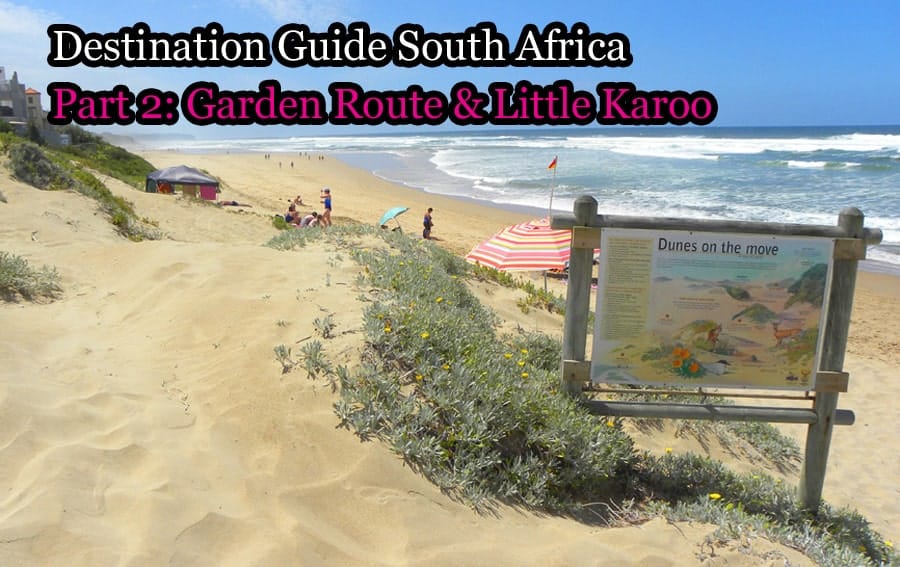
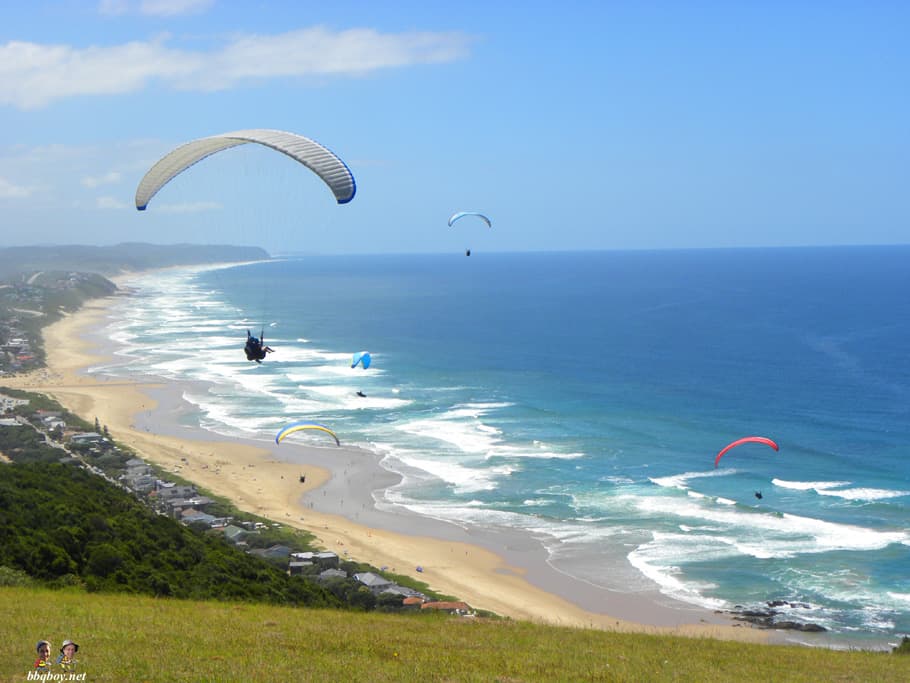
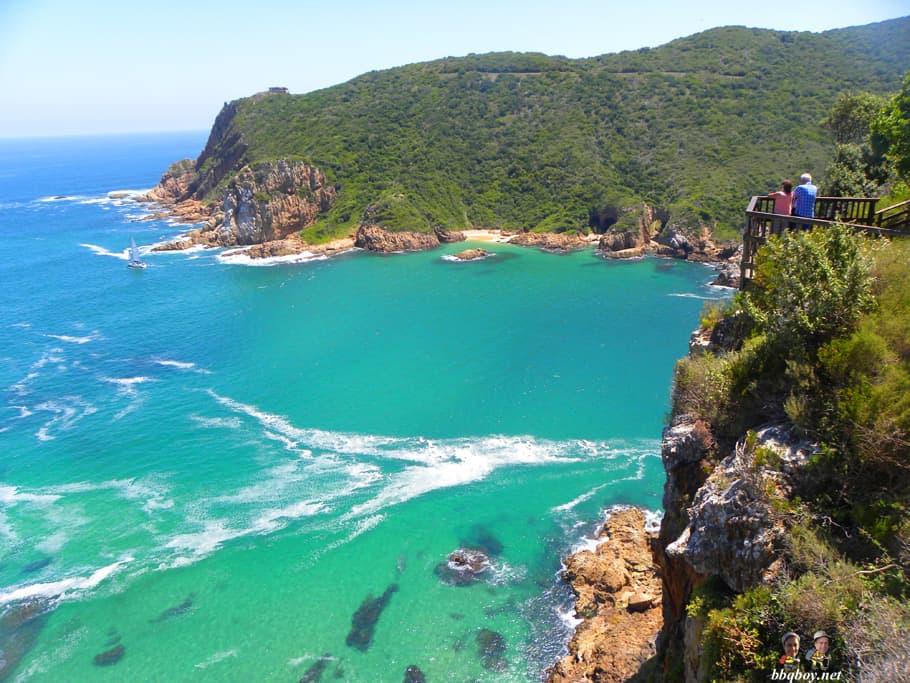
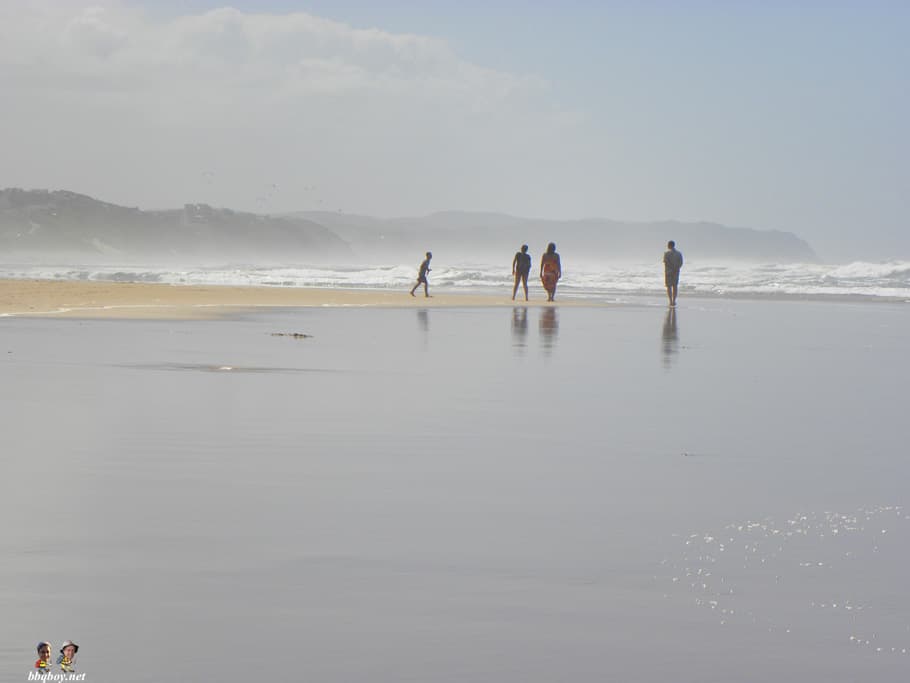
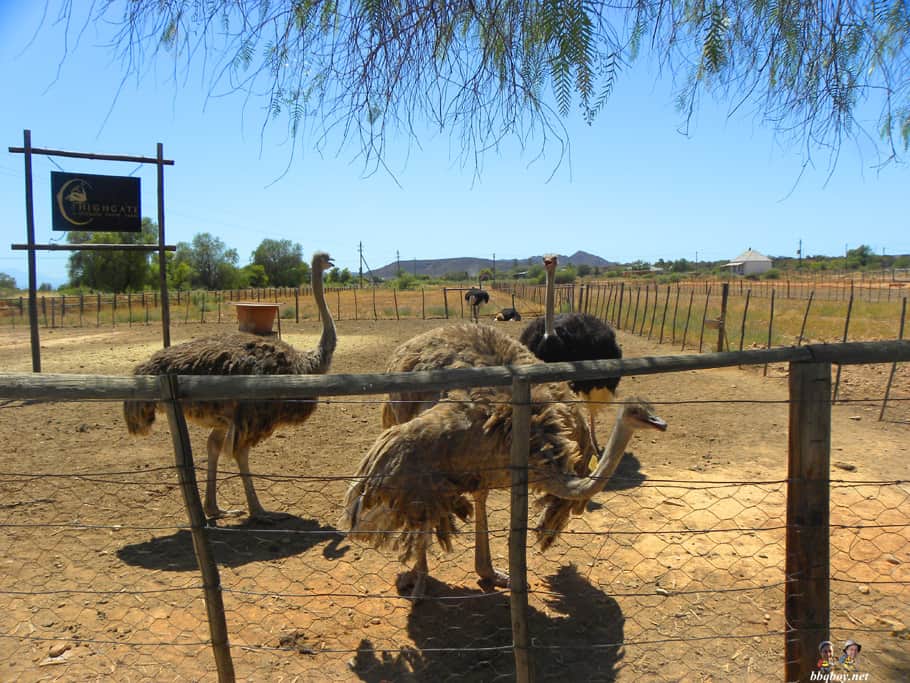
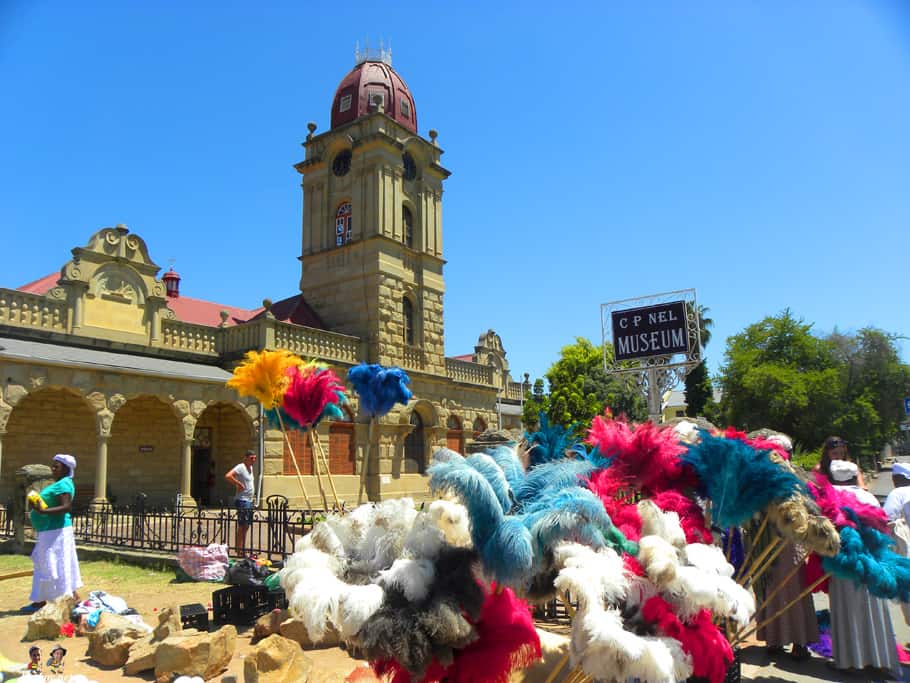
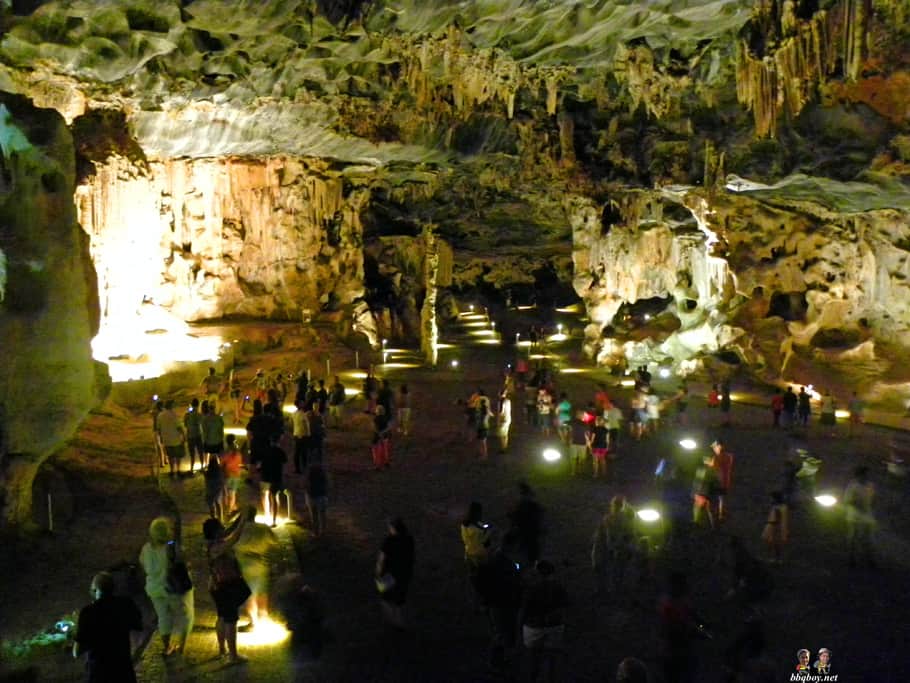
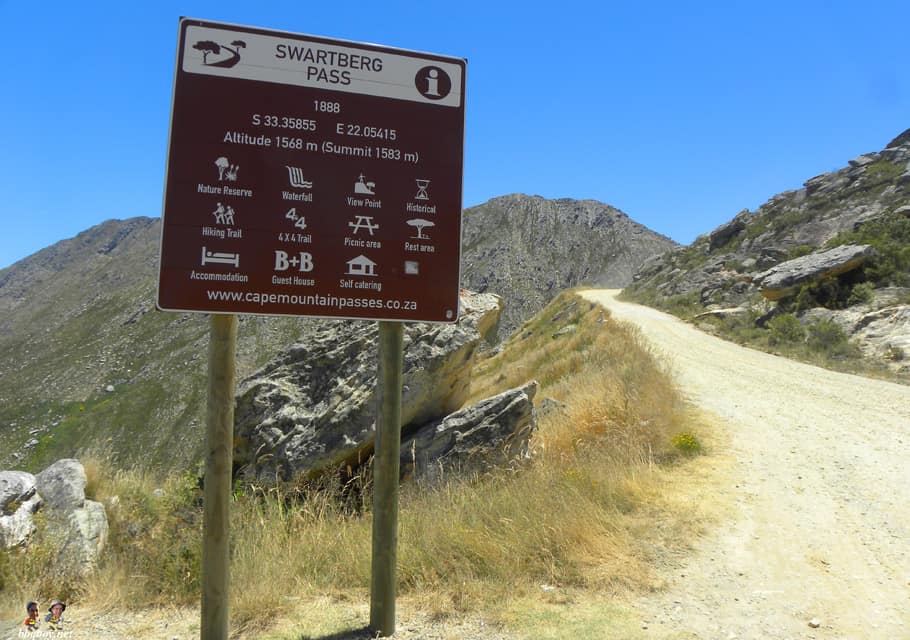
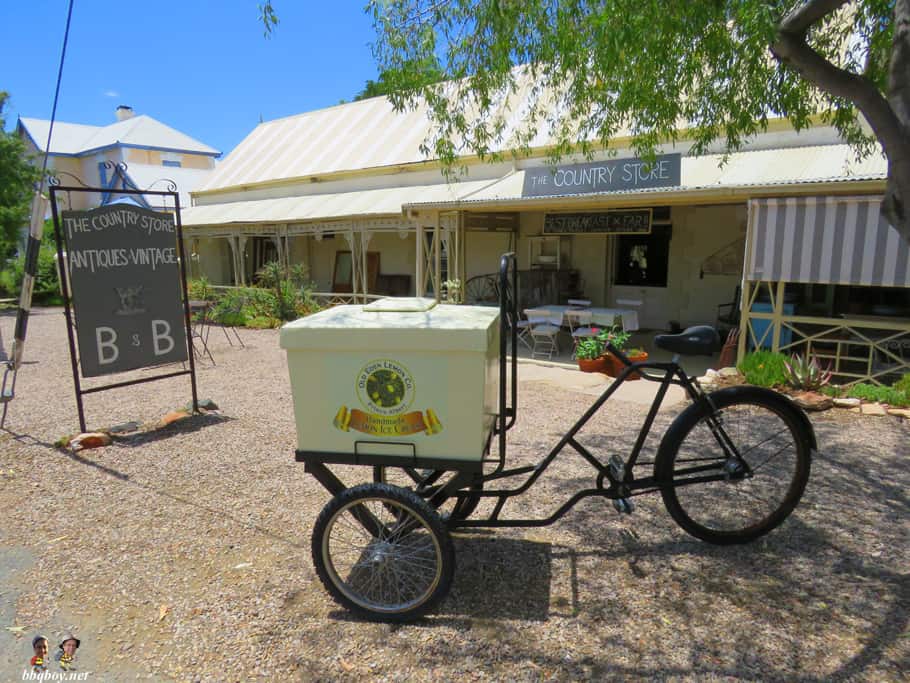
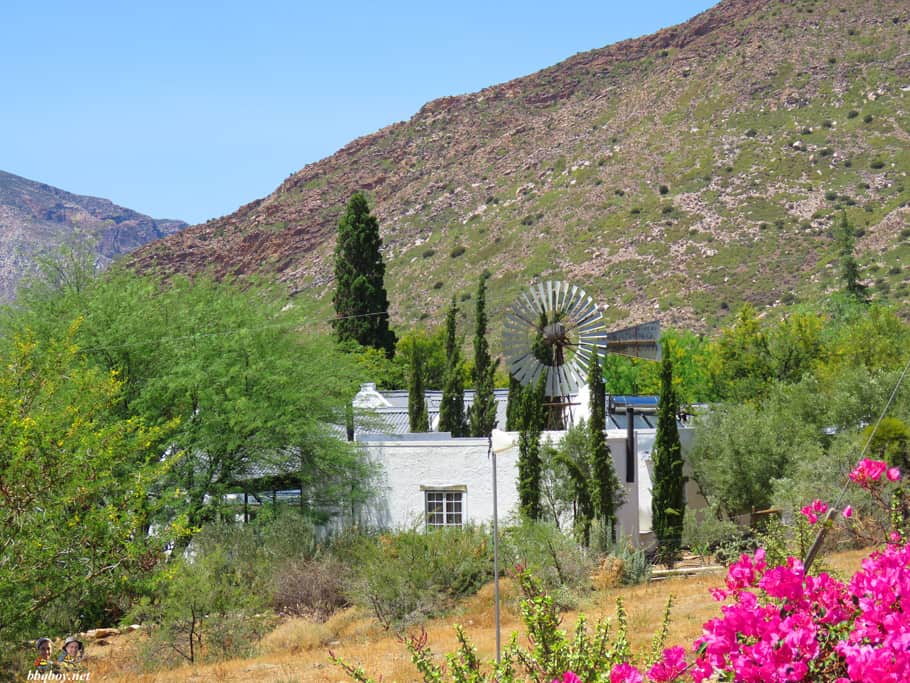
Leave a Reply